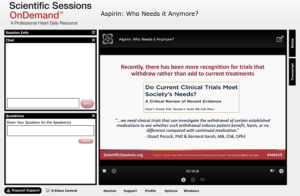Being an electrophysiologist has never been more exciting! Insights from AHA19
The past few years have witnessed the emergence of many technological advances that hold promises for potentially revolutionizing the way we are treating patients with cardiac arrhythmias. Between innovative technologies for cardiac pacemakers and defibrillators, breakthroughs in ablation of atrial and ventricular arrhythmias, and boundless progress in remote monitoring of cardiac rhythm, the field of clinical electrophysiology (EP) is undergoing an exhilarating conceptual transformation.
The American Heart Association (AHA) 2019 Scientific Sessions that took place in Philadelphia last month, have dedicated an excellent session to highlight and summarize these recent EP advances. A session that brought together prominent EP leaders and innovators discussing the present and the future of the field, which, to an aspiring electrophysiologist like myself, has been one of the most inspiring sessions of the conference. The title was catchy: “Hottest New EP Advances and Connections with the Experts”, and despite being an evening session, the large conference room was packed with EP enthusiasts at different stages of their careers. It was around an hour and a half of tour-de-force presentations by an outstanding group of speakers. The amount of valuable information presented is more than what can be captured in a short essay, yet, I will highlight the most promising technologies in my humble opinion.
I will start with cardiac implantable electronic devices (CIEDs), where several technological and conceptual breakthroughs have recently made their way to clinical practice, and many more are expected to do so in the near future. The 3 most exciting frontiers are:
- The leadless intra-cardiac pacemaker system, which was approved by the FDA in April 2016. The device is the size of a large vitamin capsule, implanted percutaneously. This new technology allows cardiac pacing in the absence of intravenous leads and subcutaneous pulse generators, which not only is more convenient for patients, but also avoids lead and pocket-related complications.1 The current commercially-available system is only capable of single-chamber sensing and pacing, however, the results of the MARVEL 2 study,2 demonstrating the safety and efficacy of an accelerometer-based VDD pacing algorithm to maintain AV synchrony with the leadless pacemaker system, were just released at AHA19. Newer technologies that are expected in the next few years include atrial leadless pacemaker and leadless multicomponent systems, for instance using endocardial left ventricular electrodes as part of cardiac resynchronization therapy.
- The new subcutaneous implantable cardioverter- defibrillator (ICD) technologies. The original subcutaneous ICD was approved by the FDA in September 2012 and has been widely used in clinical practice.3 This technology provides a defibrillator option for patients with challenging anatomy for conventional intravascular ICD implantation, and with no indication for pacing. Newer promising technologies in the field of subcutaneous ICDs that are not commercially available yet include string subcutaneous ICD – with no can, hence no need for a surgical pocket – and extravascular ICD which is capable of pacing the myocardium in addition to delivering ICD shocks, while being completely extravascular. Combining subcutaneous ICDs with leadless pacemaker systems is another exciting area of future research.
- His bundle pacing and left bundle branch pacing, which are new physiological alternative to right ventricular pacing, and potentially to bi-ventricular pacing in patients with proximal left bundle branch block, through engaging the normal conductive His-Purkinje system and, therefore, avoiding the long term deleterious effects of ventricular dyssynchrony. As opposed to the above-mentioned technological breakthroughs, this is more of a slow ongoing learning process, which has been around since the early 2000’s, initially performed with the already-available standard pacing leads with reshaped or deflectable stylets, limited by technical difficulties. However, the more recent use of a solid core lead in conjunction with specialized sheaths has sparked new interests in this pacing technique, which is being increasingly adopted in clinical practice and eventually made its way to the most recent pacing guidelines.4 The future likely holds the development of more specialized equipment designed specifically to facilitate these pacing approaches.
Switching gears to the field of cardiac ablation, the other major pillar of EP interventions. The most promising, and potentially revolutionary advances in this area are:
- Non-invasive radio-ablation of ventricular tachyarrhythmias (VT). VT ablation is known to be associated with increased risk of procedural complications given the sick phenotype that these patients commonly present with, in addition to the length of the procedure, catheter manipulations inside the left ventricle and the need for induction of VT, which makes the procedure more challenging and more risky compared to other forms of cardiac ablation. The use of stereotactic body radiation therapy (SBRT) to ablate VT in a radiology suite, aided by non-invasive cardiac mapping using electrocardiographic imaging, is undoubtedly one of the most exciting recent breakthroughs in the field of EP. The use of radiotherapy not only mitigates the procedural risks of catheter-based ablation, but also allows reaching myocardial foci that are not accessible by conventional endocardial or epicardial approaches. Although the available data are merely preliminary,5 and more research is needed prior to the widespread use of this procedure in treating patients with VT, the concept is very promising and the potential implications are remarkable. The potential use of SBRT in treating other arrhythmias such as atrial fibrillation (AF) is also under investigation.
- Pulsed Field Ablation (PFA) for pulmonary vein isolation (PVI). Indiscriminate tissue destruction with potential damage to surrounding structures such as the esophagus and the phrenic nerve has been the major barrier to delivering reliable ablation lesions that ensure durable PVI in AF patients. This new ablation technology uses a process called electroporation, for which cardiac myocytes are most sensitive, potentially allowing selective cardiac ablation. The results of the IMPULSE and PEFCAT studies were recently published, and demonstrated an impressive 100% PVI durability at 3 months with this technique, with an average skin-to-skin procedure time of only 92 minutes. Importantly, there were no evidence of esophageal or phrenic nerve damage, despite the lack of use of an esophageal protection strategy.6 The ability to safely deliver deep ablation lesions in the atrium without damaging the surrounding extra-cardiac tissue can potentially transform the success rates of catheter ablation for AF and may expand the use of this technology to other forms of arrhythmia ablations.
Listening to world-renowned EP experts enthusiastically walking the audience through these various breakthroughs and painting a futuristic picture of how the world of EP can look like in the near future, left me thinking about how lucky I am to be starting my EP training in this exciting era of technological revolution. Witnessing the transformation of a cardiac subspecialty is exciting, but the possibility of being part of this transformation is mind-blowing!
References:
- Reynolds D, Duray GZ, Omar R et al. A Leadless Intracardiac Transcatheter Pacing System. N Engl J Med. 2016;374:533-41
- Chinitz LA, Khelae AK, Garweg C et al. Atrial Synchronous Pacing Using a Leadless Ventricular Pacemaker: Primary Results From the MARVEL 2 Study. Presented at the American Heart Association Annual Scientific Sessions (AHA 2019), Philadelphia, PA, November 16, 2019
- https://www.accessdata.fda.gov/scripts/cdrh/cfdocs/cfPMA/pma.cfm?id=P110042. Accessed November 30, 2019.
- Kusumoto FM, Schoenfeld MH, Barrett C, et al. 2018 ACC/AHA/HRS Guideline on the Evaluation and Management of Patients With Bradycardia and Cardiac Conduction Delay. Circulation. 2019;140:e382–e482
- Robinson CG, Samson PP, Moore KMS et al. Phase I/II Trial of Electrophysiology-Guided Noninvasive Cardiac Radioablation for Ventricular Tachycardia. Circulation. 2019;139:313–321.
- Reddy VY, Neuzil P, Koruth JS et al. Pulsed Field Ablation for Pulmonary Vein Isolation in Atrial Fibrillation. J Am Coll Cardiol. 2019;74:315-326.
The views, opinions and positions expressed within this blog are those of the author(s) alone and do not represent those of the American Heart Association. The accuracy, completeness and validity of any statements made within this article are not guaranteed. We accept no liability for any errors, omissions or representations. The copyright of this content belongs to the author and any liability with regards to infringement of intellectual property rights remains with them. The Early Career Voice blog is not intended to provide medical advice or treatment. Only your healthcare provider can provide that. The American Heart Association recommends that you consult your healthcare provider regarding your personal health matters. If you think you are having a heart attack, stroke or another emergency, please call 911 immediately.
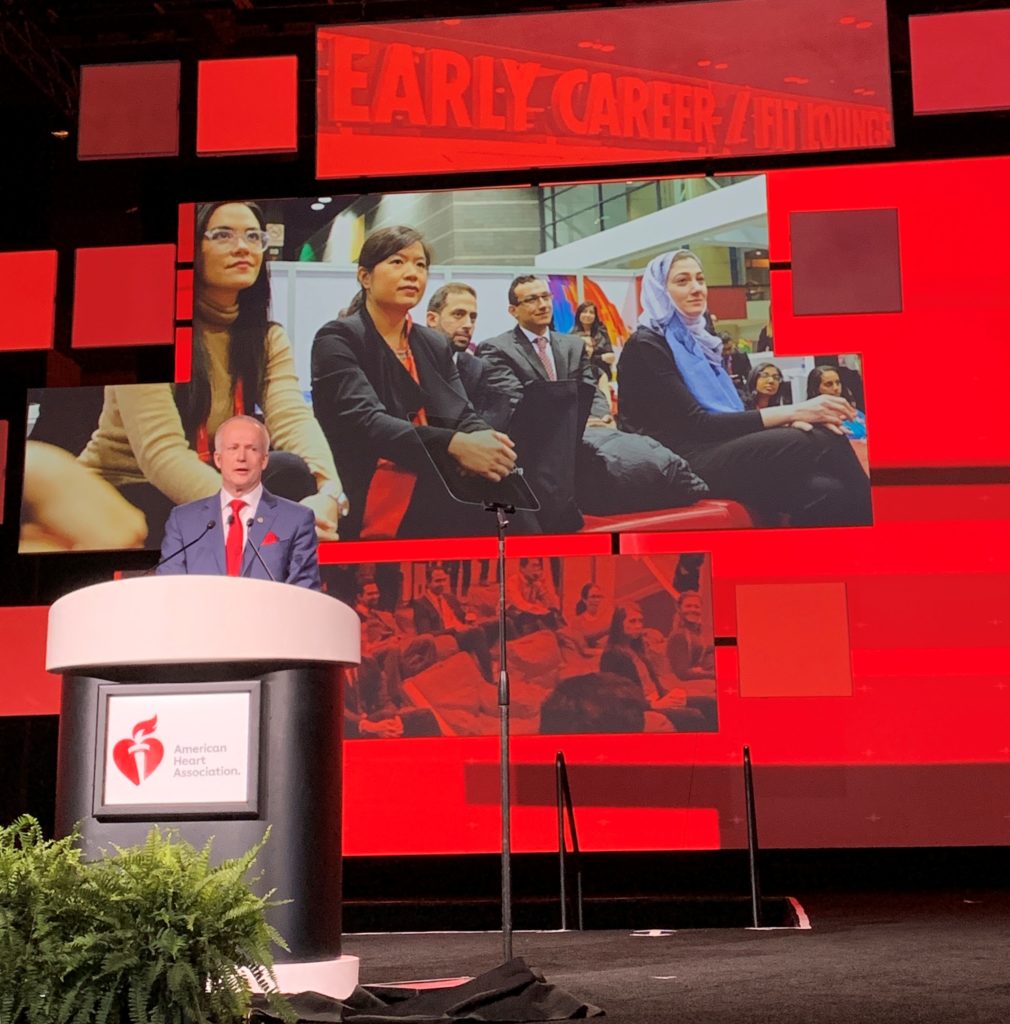


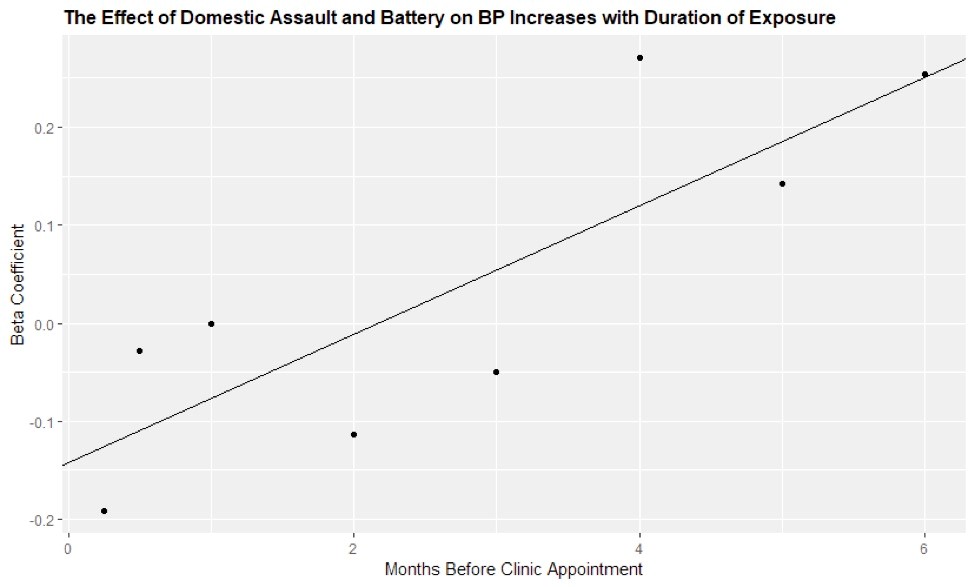
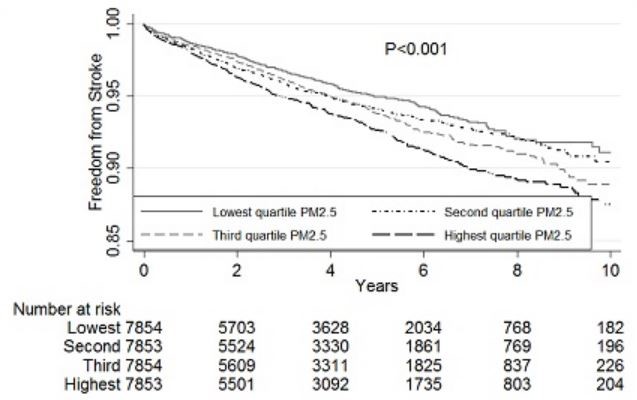

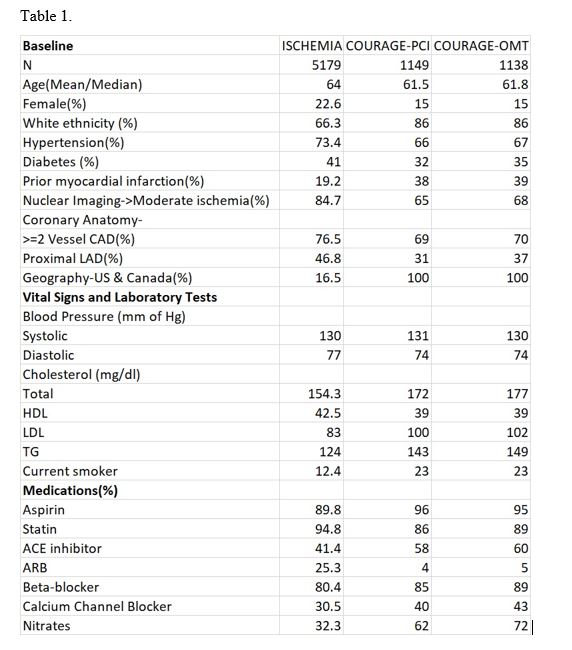
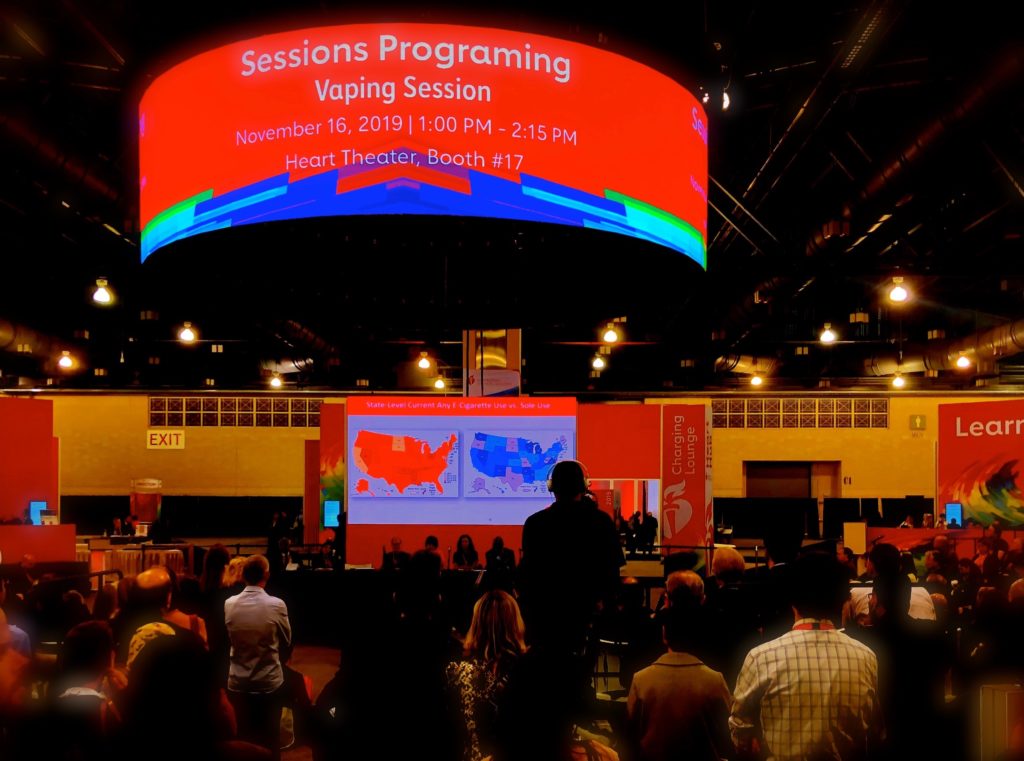
 I have gone back and forth with attending the American Heart Association (AHA) Scientific Sessions online in 2017 (AHA17), to onsite (AHA18), and this year (AHA19) I attended online again. There was absolutely no comparison between attending AHA18 to the online versions! I was the first to say that going to conference is overwhelming because there is so much to see and so many people to meet. I have since come to appreciate the benefits to attending meetings onsite. Generally, I stay within my session [Atherosclerosis, Thrombosis, Vascular Biology (ATVB) or Hypertension (HTN)]. Attending online gives some limitations, such as being at home, work, or traveling, there is a time restraint as well as multiple distractions. I experienced them all! I was traveling to a conference that conflicted with AHA19, thus the distractions of traveling and keeping up with my meeting responsibilities was a lot to juggle. Once I was home, there was everything that goes along with getting settled back into the routine of things that gave me a distraction. This year was a beast of responsibilities, but before I discourage you from attending a meeting online, let me share some benefits and things that I enjoyed about having the flexibility of being online rather than onsite.
I have gone back and forth with attending the American Heart Association (AHA) Scientific Sessions online in 2017 (AHA17), to onsite (AHA18), and this year (AHA19) I attended online again. There was absolutely no comparison between attending AHA18 to the online versions! I was the first to say that going to conference is overwhelming because there is so much to see and so many people to meet. I have since come to appreciate the benefits to attending meetings onsite. Generally, I stay within my session [Atherosclerosis, Thrombosis, Vascular Biology (ATVB) or Hypertension (HTN)]. Attending online gives some limitations, such as being at home, work, or traveling, there is a time restraint as well as multiple distractions. I experienced them all! I was traveling to a conference that conflicted with AHA19, thus the distractions of traveling and keeping up with my meeting responsibilities was a lot to juggle. Once I was home, there was everything that goes along with getting settled back into the routine of things that gave me a distraction. This year was a beast of responsibilities, but before I discourage you from attending a meeting online, let me share some benefits and things that I enjoyed about having the flexibility of being online rather than onsite.